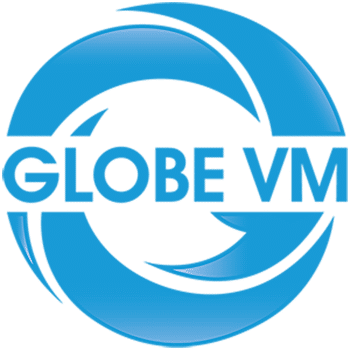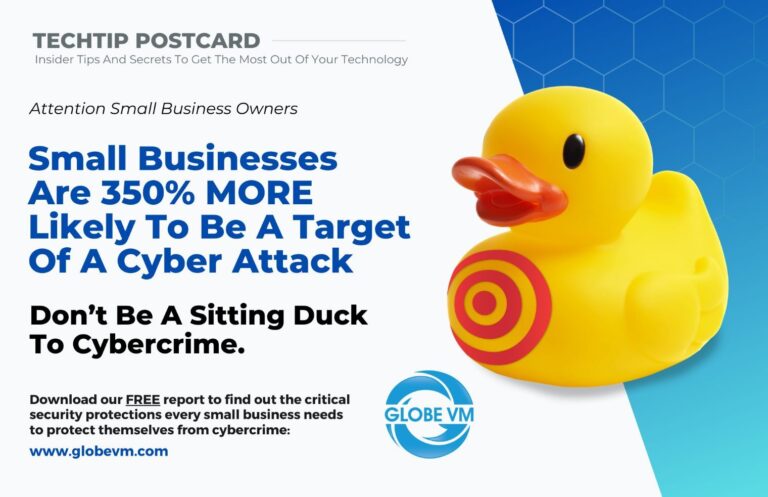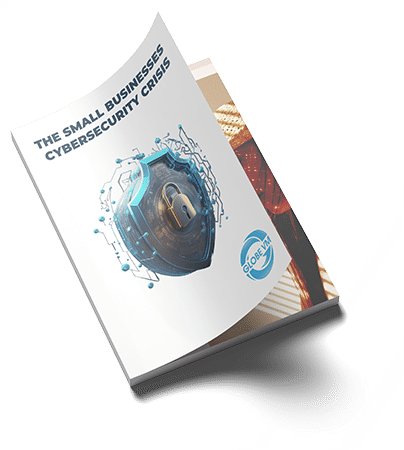Essential Compliance & Risk Management Tips for Your Business
Woodland Hills Compliance & Risk Management In today’s complex regulatory environment, businesses of all sizes face the challenge of staying compliant with various laws and regulations. Non-compliance can lead to severe fines, legal issues, and damage to your brand reputation. Additionally, effectively managing risks—whether they are operational, financial, or cybersecurity risks—is crucial to ensuring long-term success and stability. GlobeVM offers comprehensive compliance and risk management solutions to help your Woodland Hills business navigate these challenges, stay compliant, and protect your valuable assets.
Introduction to Compliance & Risk Management
Compliance and risk management are essential for protecting your business from legal penalties, financial losses, and reputational harm. Compliance ensures that your company adheres to all relevant laws, regulations, and industry standards, while risk management identifies potential threats and outlines strategies to mitigate them. By partnering with GlobeVM, you can gain the expertise and support needed to develop robust compliance programs and implement effective risk management practices.
5 Key Compliance & Risk Management Strategies for Your Business
Businesses require clear guidance to maintain compliance and manage risks effectively. Here are five essential compliance and risk management strategies your business should consider: 1. Implement Comprehensive Policies and Procedures
- Establishing clear policies and procedures ensures that everyone within your organization understands their responsibilities regarding compliance and risk management. These documents should cover areas such as data protection, internal controls, and reporting requirements.
2. Conduct Regular Compliance Audits and Risk Assessments
- Regular audits and assessments can help you identify gaps in compliance and areas where your business may be vulnerable to risks. By conducting these reviews frequently, you can address potential issues before they escalate, ensuring continuous improvement in compliance and risk management.
3. Provide Ongoing Employee Training and Education
- Your employees play a crucial role in maintaining compliance and managing risks. Providing ongoing training and education on relevant laws, regulations, and industry standards ensures that your team is well-informed and prepared to handle potential issues as they arise.
4. Utilize Technology for Monitoring and Reporting
- Leveraging technology can significantly improve your compliance and risk management efforts. Implementing tools and software to monitor compliance status, track changes in regulations, and generate reports for audit trails helps streamline these processes and reduce the likelihood of human error.
5. Develop a Robust Incident Response and Disaster Recovery Plan
- Having an incident response and disaster recovery plan in place is essential for mitigating the impact of unforeseen events such as data breaches, natural disasters, or internal fraud. This plan should outline steps for responding to incidents, communicating with stakeholders, and restoring normal operations as quickly as possible.
Understanding Compliance & Risk Management: FAQs
A thorough understanding of compliance and risk management is critical for business owners and executives. Below are some frequently asked questions to help clarify these concepts: Q1: What is compliance management, and why is it important?A1: Compliance management involves ensuring your business adheres to all relevant laws, regulations, and industry standards. Maintaining compliance is important because it helps protect your company from legal penalties, fines, and reputational damage. Q2: What does risk management entail?A2: Risk management involves identifying potential threats to your business (such as cyberattacks, operational failures, or financial instability), assessing their likely impact, and implementing strategies to mitigate those risks. Effective risk management helps maintain stability and minimize potential losses. Q3: How can GlobeVM help with compliance and risk management?A3: GlobeVM offers comprehensive solutions that include compliance audits, regulatory guidance, risk assessments, employee training, and technology implementation. We tailor our services to your business’s specific needs, helping you achieve and maintain compliance while minimizing risk exposure. Q4: Do small businesses need compliance and risk management services?A4: Absolutely. Regardless of size, businesses face regulatory requirements and potential risks that can impact their operations. Small businesses, in particular, benefit from compliance and risk management services by avoiding costly penalties and ensuring continued growth and success. Q5: How often should a business review its compliance and risk management practices?A5: A business should review its compliance and risk management practices regularly, at least annually or whenever there are significant changes in regulations, internal operations, or business strategy. Regular reviews help ensure that policies and procedures remain effective and up to date.
Myth-Busting Compliance & Risk Management
There are several misconceptions about compliance and risk management. Let’s debunk some of the common myths:
- Myth: Compliance is only necessary for large corporations. Reality: All businesses, regardless of size or industry, are subject to various laws and regulations. Small and medium-sized enterprises also benefit from compliance practices as they can help avoid penalties and establish trust with customers and partners.
- Myth: Risk management is an unnecessary cost. Reality: Investing in risk management can actually save your business money in the long run. By proactively identifying and addressing risks, you can avoid costly disruptions, financial losses, and reputational damage.
- Myth: Once a compliance program is in place, no further action is needed. Reality: Regulations and business environments change over time, making it crucial to regularly update and review your compliance program. Ongoing monitoring and adjustments are necessary to maintain compliance and adapt to new challenges.
- Myth: Data security and risk management are solely the IT department’s responsibility. Reality: While the IT department plays a critical role in data security, effective compliance and risk management require a company-wide approach. Every employee should understand their part in protecting sensitive information and adhering to compliance policies.
- Myth: Outsourcing compliance and risk management is too expensive. Reality: Outsourcing these services can be cost-effective, particularly for smaller businesses that may not have the expertise or resources to manage these tasks internally. Partnering with an experienced firm like GlobeVM ensures that compliance and risk management are handled efficiently and effectively.
Next Steps: Strengthen Your Compliance & Risk Management with GlobeVM
Having robust compliance and risk management systems in place is essential for the stability and success of your business. GlobeVM provides comprehensive solutions tailored to your company’s needs, ensuring you can confidently navigate complex regulations and mitigate potential risks. If you’re ready to improve your compliance and risk management processes, here’s what you can do:
- Contact GlobeVM Today: Call us at (310) 750-4939 to discuss how we can assist you in achieving regulatory compliance and managing risks effectively.
- Schedule a Free Consultation: Fill out our online form to schedule a consultation with our compliance and risk management experts. During this meeting, we’ll evaluate your business’s current situation, identify key areas for improvement, and develop a tailored plan to help you achieve and maintain compliance while mitigating risks.
Key Compliance Regulations and Their Importance to Your Business:
1. HIPAA (Health Insurance Portability and Accountability Act)
What It Is: HIPAA is a U.S. federal law enacted in 1996 to protect sensitive patient health information from being disclosed without a patient’s consent or knowledge. Key Provisions:
- Privacy Rule: Protects the privacy of individuals’ health information.
- Security Rule: Sets national standards for protecting the confidentiality, integrity, and availability of electronic protected health information (ePHI).
- Breach Notification Rule: Requires covered entities and their business associates to provide notification following a breach of unsecured PHI.
Who It Affects: Healthcare providers, health plans, healthcare clearinghouses, and business associates handling protected health information (PHI). Why It Matters: Compliance with HIPAA ensures that healthcare organizations safeguard patient information, reducing the risk of data breaches and maintaining patient trust.
2. GDPR (General Data Protection Regulation)
What It Is: GDPR is a comprehensive data protection law that came into effect across the European Union (EU) in 2018. It sets guidelines for the collection and processing of personal information of individuals within the EU. Key Provisions:
- Data Protection Principles: Data must be collected lawfully, for specified purposes, and stored securely.
- Consent Requirements: Organizations must obtain clear and affirmative consent before collecting personal data.
- Data Subject Rights: Individuals have the right to access their personal data, request corrections, and be forgotten, among others.
- Penalties: Non-compliance can result in significant fines, up to 4% of annual global turnover or €20 million, whichever is higher.
Who It Affects: Any organization (regardless of location) that processes the personal data of individuals in the EU, including data controllers and processors. Why It Matters: GDPR emphasizes transparency, accountability, and the protection of individual privacy rights. Compliance helps businesses avoid heavy fines and maintain customer trust.
3. PCI DSS (Payment Card Industry Data Security Standard)
What It Is: PCI DSS is a set of security standards designed to ensure that all companies accepting, processing, storing, or transmitting credit card information maintain a secure environment. Key Provisions:
- Build and Maintain Secure Networks: Install and maintain firewalls and other protective measures.
- Cardholder Data Protection: Encrypt data, restrict access to cardholder information, and maintain secure systems.
- Regular Monitoring and Testing: Track and monitor access to network resources and conduct regular security tests.
Who It Affects: Any organization that processes, stores, or transmits credit card information, including merchants and service providers. Why It Matters: Compliance protects consumers’ payment card data, reduces the risk of data breaches, and helps organizations avoid penalties and potential loss of reputation.
4. SOX (Sarbanes-Oxley Act)
What It Is: Enacted in 2002, SOX is a U.S. federal law that sets new or expanded requirements for all U.S. public company boards, management, and public accounting firms. Key Provisions:
- Enhanced Financial Disclosures: Companies must disclose financial data and internal control structures comprehensively.
- Corporate Responsibility: Requires top management to certify the accuracy of financial statements personally.
- Internal Controls Assessment: Companies must establish and maintain internal controls and procedures for financial reporting.
Who It Affects: U.S. public companies and accounting firms that audit them. Certain provisions also apply to privately held companies. Why It Matters: Compliance ensures transparency, accuracy, and integrity in financial reporting, thereby protecting investors and the general public from fraudulent financial practices.
5. CCPA (California Consumer Privacy Act)
What It Is: The CCPA is a California state law that enhances privacy rights and consumer protection for residents of California, effective from January 2020. It gives consumers more control over the personal information businesses collect about them. Key Provisions:
- Disclosure: Businesses must inform consumers about the types of personal data collected and the purpose of usage.
- Right to Opt-Out: Consumers can opt-out of the sale of their personal information.
- Data Deletion: Consumers have the right to request deletion of their personal data.
- Penalties: Non-compliance can lead to fines enforced by the California Attorney General.
Who It Affects: For-profit businesses that do business in California, meet certain revenue thresholds, or handle the personal data of 50,000 or more California consumers annually. Why It Matters: Compliance with CCPA helps businesses build trust with California consumers by respecting their privacy rights and avoiding potential legal actions or fines.
Summary of Compliance Regulations:
- HIPAA: Focuses on safeguarding patient health information in the healthcare industry.
- GDPR: Protects the personal data and privacy of individuals within the European Union, affecting businesses worldwide.
- PCI DSS: Sets standards for the security of credit card processing, affecting any organization handling cardholder data.
- SOX: Regulates financial practices and corporate governance of U.S. public companies.
- CCPA: Enhances privacy rights and consumer protection for California residents, affecting any relevant business operating in California.
The Importance of Compliance & Risk Management Services from GlobeVM:
Staying compliant with these (and other) regulations helps businesses avoid legal penalties, build customer trust, and maintain a positive reputation. Effective compliance and risk management strategies also promote operational efficiency and protect valuable data and resources. How GlobeVM Can Help: GlobeVM offers tailored compliance and risk management services that address the specific needs of your business, whether it involves data protection under GDPR, ensuring patient information security under HIPAA, or managing financial records per SOX requirements. By partnering with GlobeVM, you gain access to a team of experts who are familiar with the nuances of these regulations and can develop a comprehensive program to keep your business compliant and prepared for any changes in the regulatory landscape. Next Steps: To explore how GlobeVM’s compliance and risk management services can help your business navigate these regulations effectively, reach out to our experts for a tailored assessment and guidance.
Conclusion: By partnering with GlobeVM for Woodland Hills Compliance & Risk Management, you can ensure that your business remains compliant with regulations and prepared to handle potential risks. Our team of experts will guide you through implementing effective policies and procedures, maintaining an ongoing review process, and educating your employees on best practices. Don’t leave your business vulnerable—take the proactive step to protect it today by reaching out to GlobeVM’s compliance and risk management specialists.






